Where can I get the cheapest Zwift setup?
All you need to know about the cheapest Zwift set up at home
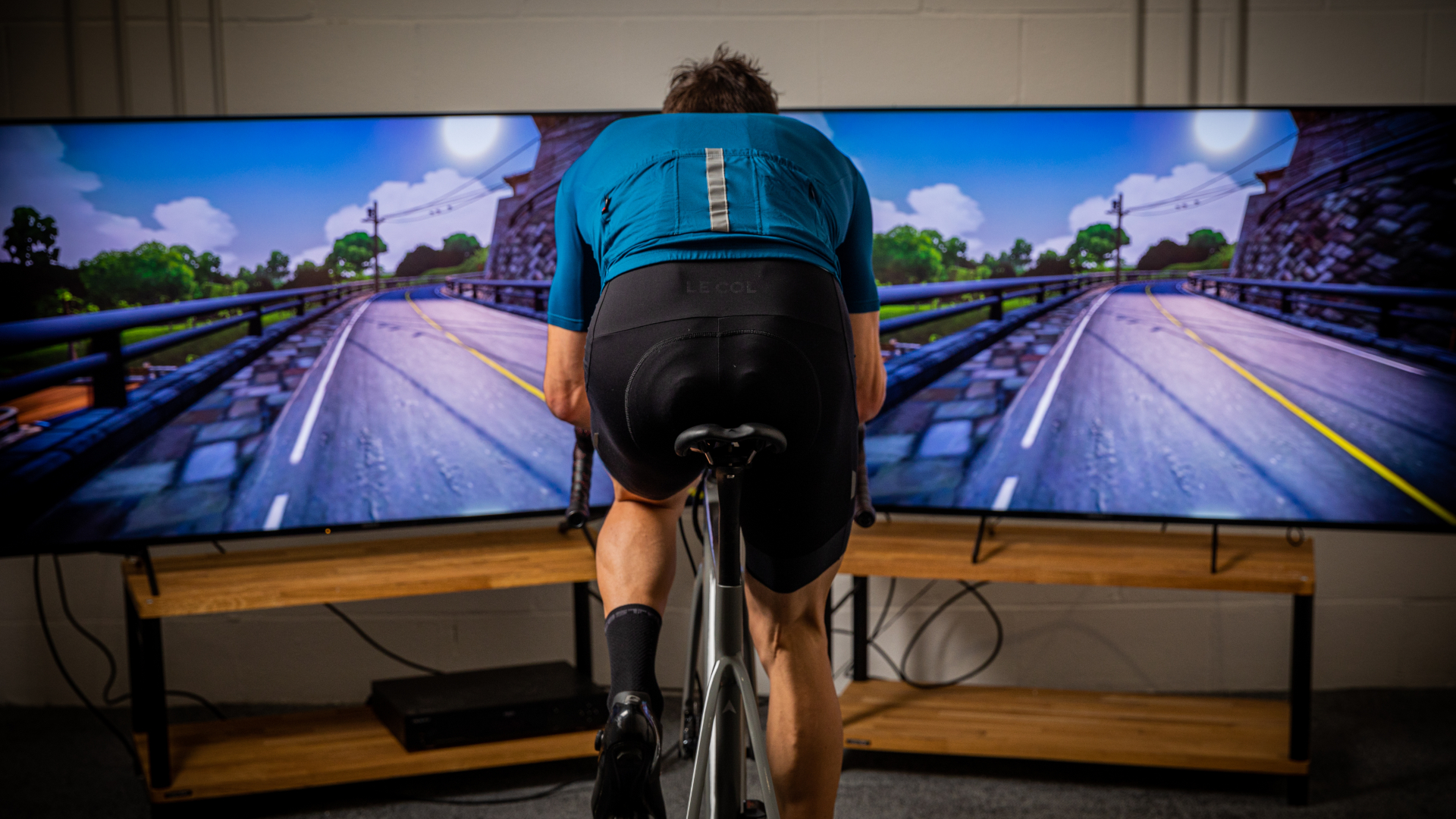
Zwift is a great platform for training and racing, enabling you to execute precision training plans for hitting your fitness goals – as well as the ability to connect with cyclists across the globe in group rides and races.
There are many different ways of getting set up riding on Zwift, which on the one hand is great, as it means there are configurations which'll work for every type of budget. But on the other hand, it does mean it can be a little confusing working out what would be the best setup for you.
To boil things down, there are three main ways of achieving a setup which will allow you to ride the virtual roads of Zwift. They are:
- A ‘dumb’ turbo trainer with a speed/cadence sensor
- A ‘dumb’ turbo trainer with a power meter
- A smart turbo trainer with an integrated power meter
We’ll go through the pros and cons relevant to each setup and our recommendations of the best products – which balance both price and performance – for each of these. Further down, we cover compatible devices for running the Zwift application, with options for the best – and the cheapest – Zwift experience.

>>>>> Setup #1
The cheapest option for riding on Zwift is using a standard turbo trainer paired with a speed and cadence sensor that connects to Zwift via ANT+ or bluetooth.
When using a standard turbo trainer that doesn't transmit data with a speed and cadence sensor, your in-game effort is generated by virtual watts called zPower. Zwift translates the speed from the turbo trainer into watts using a estimated power curve. The company has tested a range of turbo trainers to calculate the watts required on each trainer for speed-based power.
Although not as accurate as power meters, you will be able to train in the virtual world and take part in group workouts with zPower. However some races will DQ you in the final results on Zwift Power if you race with zPower. So if you are investing in Zwift for its racing opportunities read past this section to the power meter options.
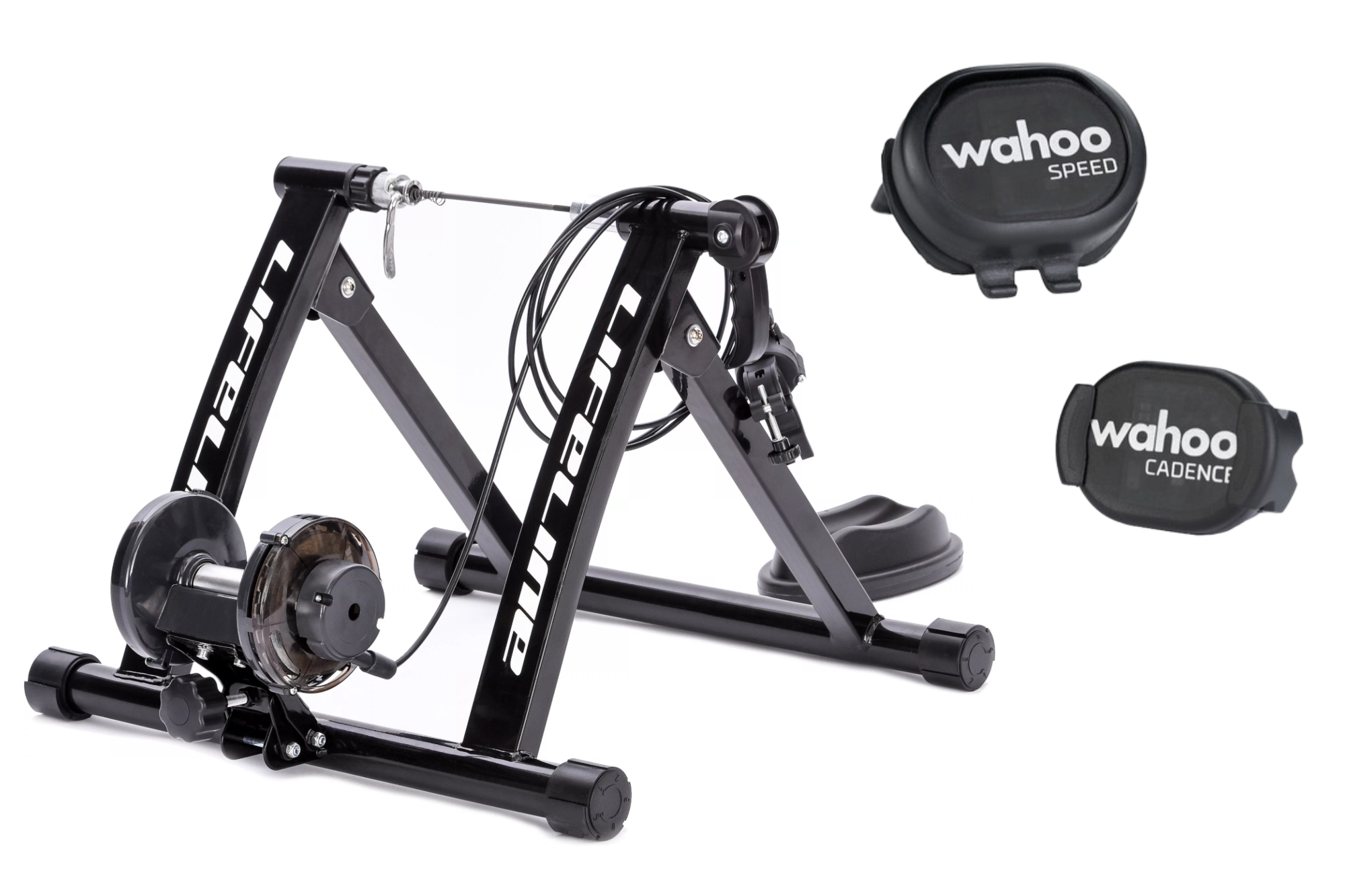
LIFELINE TT-01 TURBO TRAINER W/ Wahoo RPM Speed And Cadence Sensor
Specifications
Reasons to buy
Reasons to avoid
This is among the cheapest setups to get you rolling on the virtual roads of Zwift. Using your speed and cadence data, Zwift can estimate the power you're putting out and therefore how fast you should be going. It's not as accurate as using a power meter, but you'll still be able to ride around with your friends and get a hard workout in.
With its magnetic resistance and progressive power curve, the LifeLine TT-01 turbo trainer uses a tried and tested technology that's designed to simulate real riding dynamics.
You may already have a wheel-on turbo trainer similar to this tucked away somewhere in your garage or loft – if so, then all you need is to dig that out, attach a set of speed and cadence sensors to your bike and away you go. If this is the first wheel-on trainer you'll own, just check whether your bike has quick release or thru-axles at the rear end – if it's the latter, you'll need to pick up a thru-axle adaptor to get your bike to fit.
There are cheaper speed and cadence sensor on the market, but we would recommend going with Wahoo’s offering here. The increase in price isn’t so large and we think its worth it for their reliability and customer care.
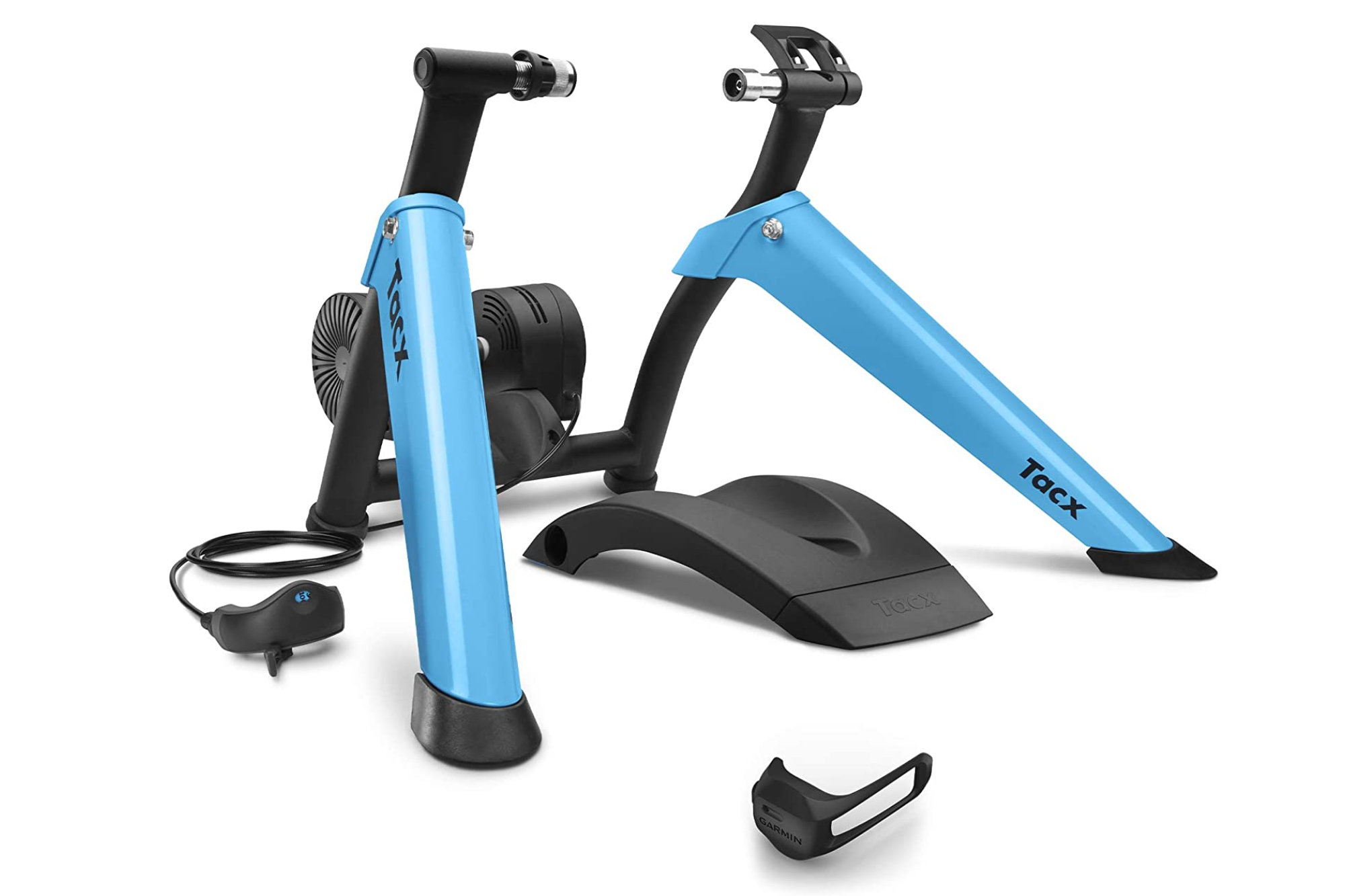
Tacx Boost Trainer Bundle
Specifications
Reasons to buy
Reasons to avoid
Alternatively, if you’d prefer to pay a little more for the simplicity of an all-in-one purchase, Tacx offers a bundle of its Boost wheel-on trainer model with the speed and cadence sensors you need to get set up on Zwift.
Plus, as the Boost is a supported trainer on Zwift, the power approximation derived from the speed and cadence sensor will be a little more accurate than with an unsupported trainer.
When we had the Tacx Boost on review, we were impressed by the range of resistance levels and the compact size it folds up to. Although it does get a bit noisy at higher power levels, it's not out of line with other wheel-on turbos and its respectably quite at medium to low wattages.
Like the LifeLine TT-01, the Tacx Boost isn’t compatible with thru-axles from the off. But, again like the LifeLine TT-01, there is an adapter kit that’s available to be purchased separately.

>>>>> Setup #2
If you already own a classic (non-smart) turbo trainer, investing in an external power meter is a an ideal option for a more accurate method for obtaining power data than speed/cadence sensors alone.
It saves replacing your current turbo for a more expensive smart version – although you do miss out on course gradient simulation that a smart trainer offers.
Obviously, there's a significant price hike relative to purchasing only speed and cadence sensors – but you do gain a significant upgrade to your bike, enabling you to keep track of your numbers on every ride, both at home and out on the road.
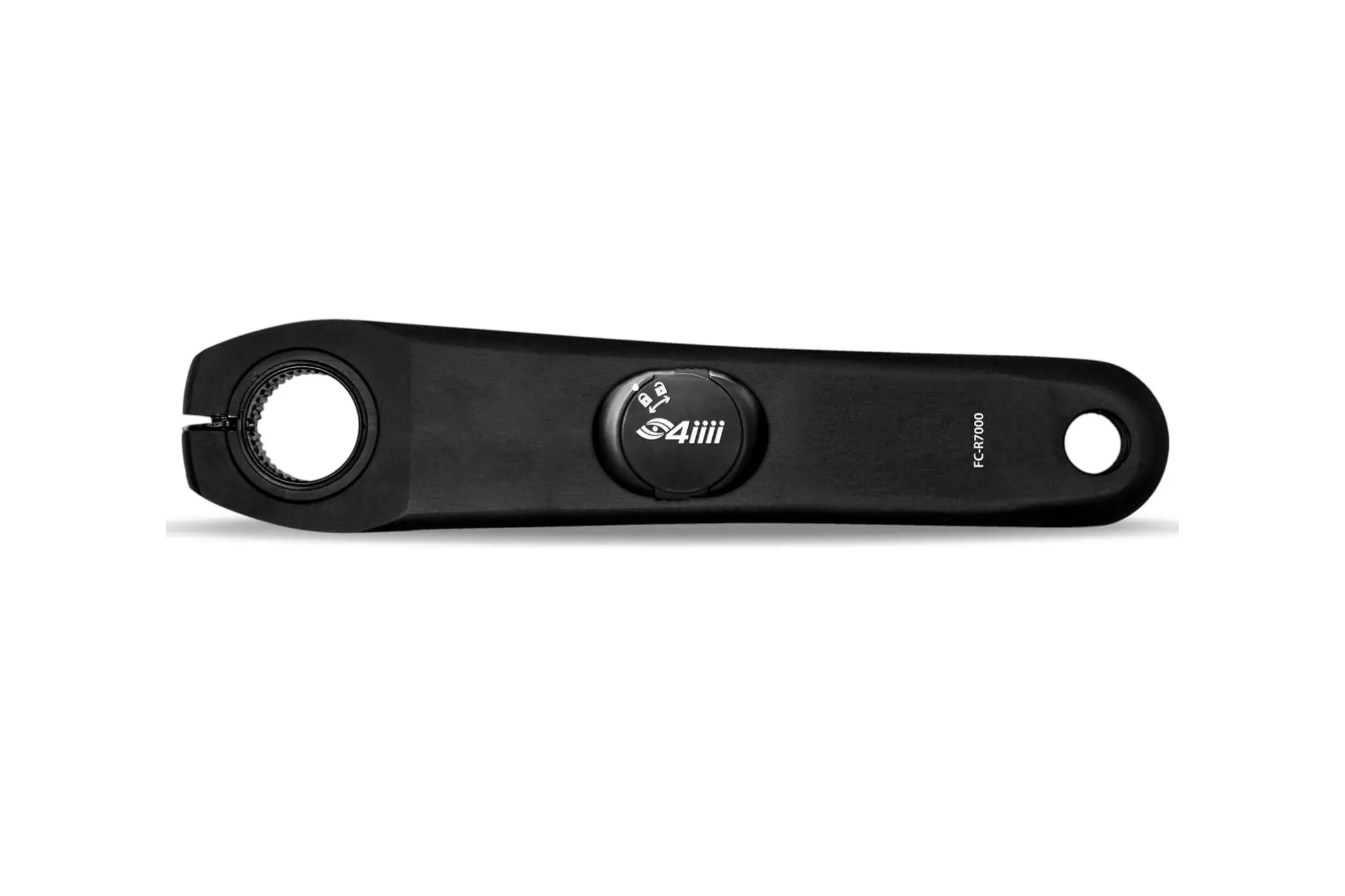
Specifications
Reasons to buy
Reasons to avoid
Even at full price, 4iiii’s left-side power crank represents a bargain compared to other power meters – when you can take advantage of a discount, it really is a must. For less than half the price of a smart turbo trainer, 4iiii’s Precision Power Meter equips you with accurate power data that you can use for training and racing on Zwift, as well as outdoors.
We’ve been roundly impressed by the accuracy and durability of 4iiii power meters here at CW. The low cost means if you have more than one bike, it can actually work out cheaper to buy a couple of these than it is to swap one set of power pedals between bikes – It’s also much less of a faff.
With this model, only the power from your left leg is recorded. So if you do have a significant strength imbalance, this won’t be picked up in the way that a dual-sided power meter or smart turbo trainer would.
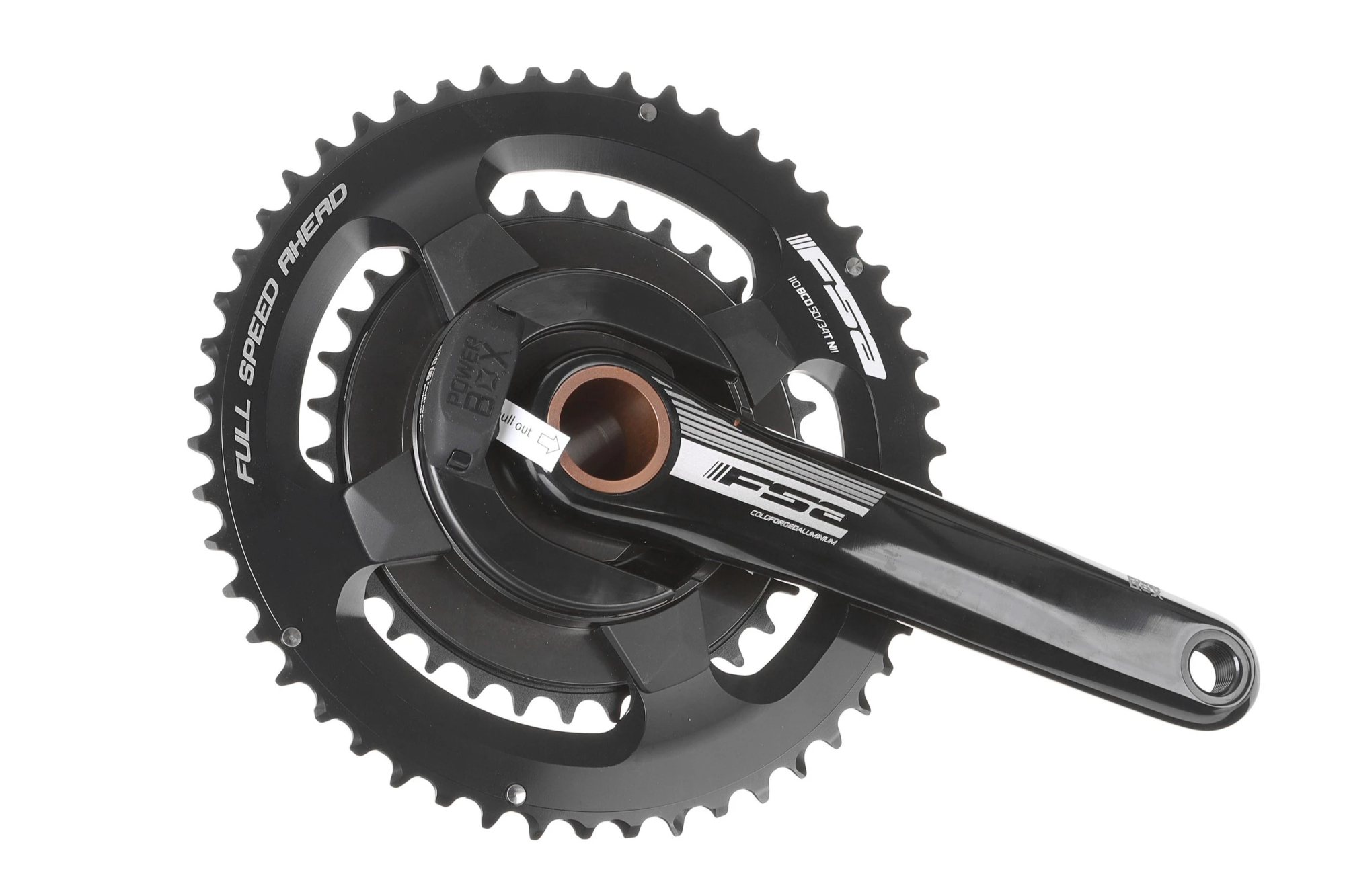
Specifications
Reasons to buy
Reasons to avoid
If dual sided power readings are what you are after, then the FSA Powerbox power meter is one of the most cost effective ways of achieving that.
On test, we found the power meter to deliver reliable and consistent numbers, breaking down the split between the right and left leg. Other power meters do offer accuracy down to ±1%, but we found the ±2% of the FSA Powerbox to be perfectly sufficient for targeted and effective training.
Its claimed weight is 738g means is not one of the lightest power meters out there, but for indoor riding this is inconsequential. That said, if you're not just looking for the cheapest Zwift set up at home, you can always invest in the higher priced hollow carbon-crank version.
Compatible with Shimano, Zipp and Campagnolo drivetrains, and different sized chainrings and length cranks available makes it pretty versatile option.

>>>>> Setup #3
Smart turbo trainers are interactive which means apps, such as Zwift, can control the trainer's resistance to replicate hills and drafting behind other riders' avatars, inside the virtual world giving it an arcade game like feel.
When you select ERG mode on Zwift, a smart trainer will automatically adjust the resistance to keep you at the required power in a power-based interval workout. This ensures you are regularly hitting your training targets and means you no longer have to stare endlessly at the screen to check you are riding at the right numbers.
With one of the best smart turbo trainers you feel more directly connected to the lumps of the virtual world, which will ensure you have a much more engaging, if possibly tougher, training session.
If you don't already own a standard turbo trainer and only wish to have power readings for efforts indoors, a smart turbo could be the way to go. Expect to pay a more than a non-smart one, but it's a worth investment keep home training stimulating.
Smart turbo trainers can be direct drive, or wheel on - direct drive trainers will be heavier and allow you to really sprint out the saddle, but wheel on models are cheaper.
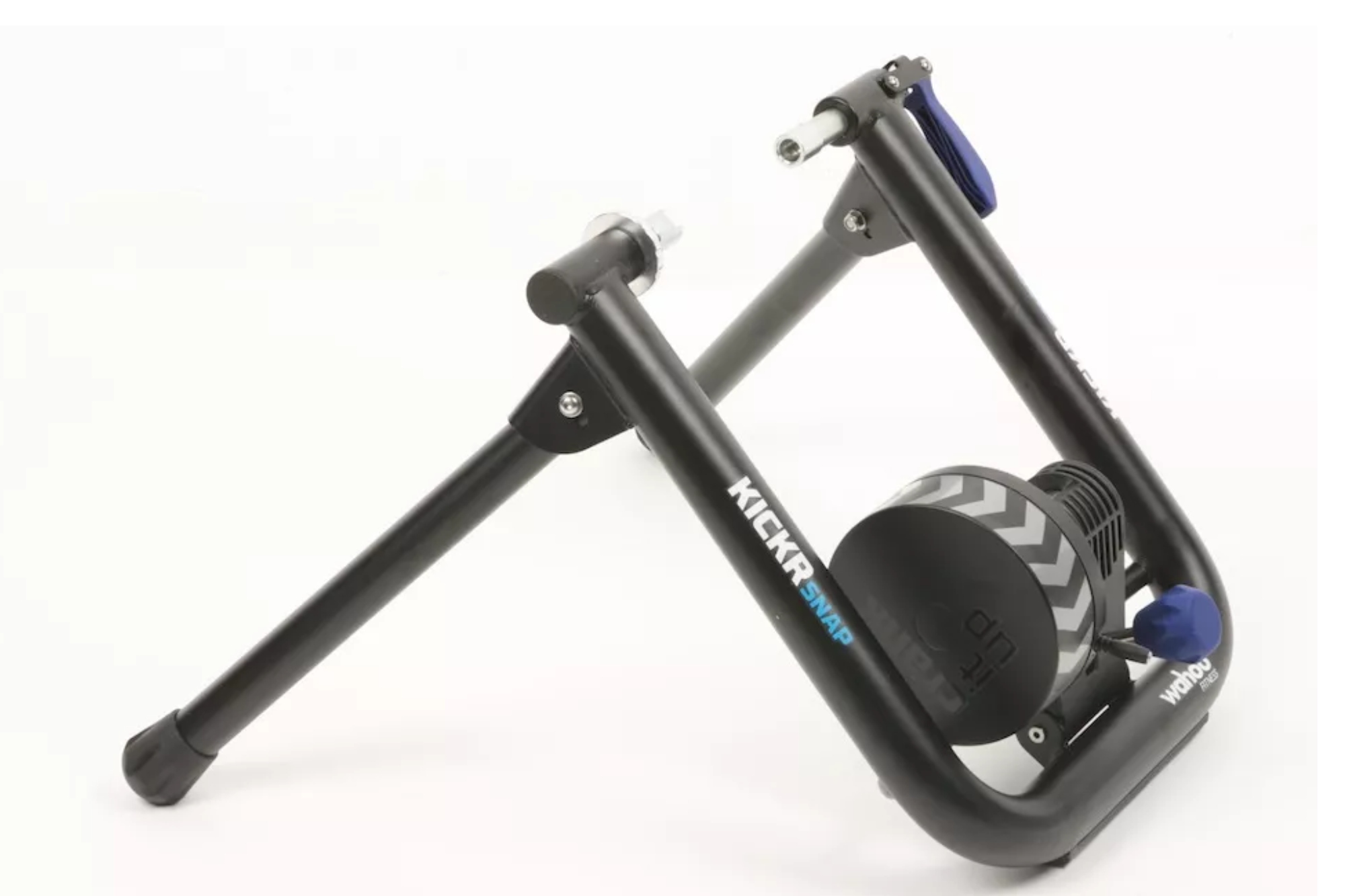
Specifications
Reasons to buy
Reasons to avoid
The Wahoo Kickr Snap might not feel as smooth as the top end direct drive options, but it still packs a punch at a much lower price point, perfect for those looking to create a cheap Zwift set up at home.
On test we found it true to it's offering a max power output of 1500 watts before the resistance wavered, and good for it's 12 per cent inclines, both of which are plenty for most riders.
With a versatile rear wheel width and clamp design, it's a versatile unit, capable of taking all wheels between 24 inches up to 29er mountain bikes, although we would recommend getting a turbo trainer specific trainer tyre it is worth getting a trainer tyre, designed to minimise overheating, slippage and wear which will be limited in size options. Do note, the trainer tyre is not suitable for outdoor cycling.
The Wahoo Kickr Snap borrows many features from it's more expensive sibling the direct drive Wahoo Kickr smart turbo trainer , including the Wahoo app, compatible with Apple and Android and same open software interface, which is compatible with third parties, e.g. Zwift, and power meters to vary the unit's resistant automatically.
Naturally there will be some data inconsistencies, as there's no auto calibration to take account of tyre pressure changes, and or even tyre wear, which can also create slippage when putting out higher numbers.
But anyone looking at a money saving option, than the Wahoo Kickr Snap is a great option.
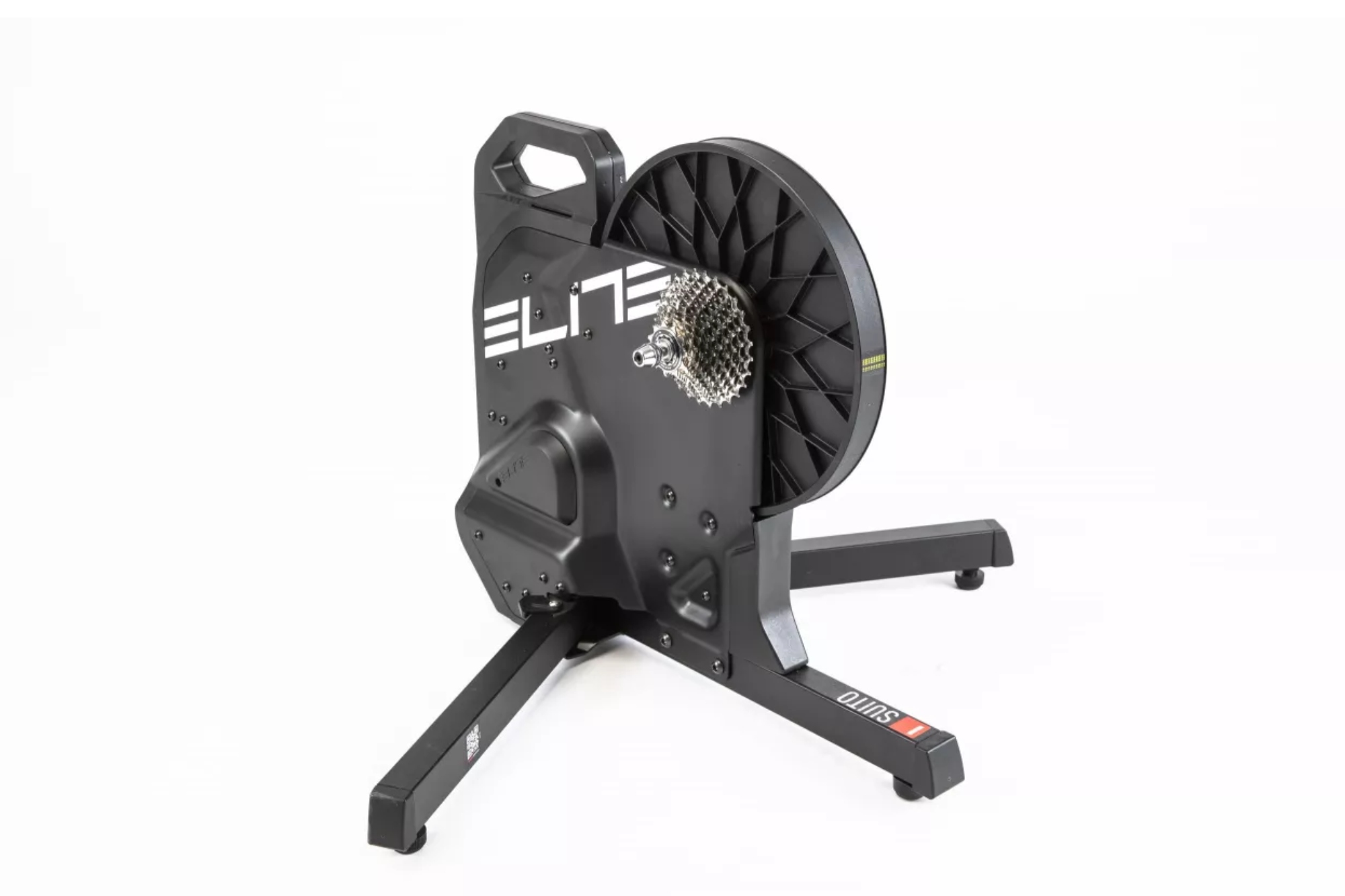
Specifications
Reasons to buy
Reasons to avoid
The Zumo Elite smart turbo trainer is not only the brand's most affordable direct drive turbo, but probably the best on the market at the price point.
On test we were able to certify Elite's 'plug and play' claim, with a box to riding time of around ten minutes.
Giving it a through Zwift shake down, we found that, while not exactly replicating the same pedalling sensation as on the open road, or higher priced smart turbo trainers, it was very natural and came a preference over a pair of rollers.
The margin of error number wise is about +/- 2.5 per cent, which isn't insignificant for riders really focused on performance data and results of races, but when compaired to a Quarq DZero power meter out on the road, efforts were always comparable.
The 1900w and 15% incline replication are just about right for most riders on most Zwift courses and the Zumo performs above adequately on these, enough to question why you would want to spend extra on a more expensive direct drive smart turbo trainer.
The Elite Zumo Smart Turbo Trainer, which can be tricky to track down in the States, but is available from Halfords in the UK is an even more affordable model to help build your cheap Zwift setup at home. However, you will find when sprinting the maximum amount of power you can exert is capped at around 1,100 watts, and there's only a 12% incline. For stronger riders this could prove a problem and dropping over 1,100 watts is not an unachievable goal for many amateur racers. The 12% incline will limit some Zwift course replications.
Should I also buy a fan for Zwift?
Whichever of the setups you decide is best for your riding needs and budget, a fan is a big plus to help make indoor riding more bearable.
Overheating can easily cause a reduction in power, as well as making the whole experience a lot less enjoyable, and even with windows and doors open, your body temperature can quickly build up.
A cheap desktop fan such as this one from Amazon coupled with a standard hand towel will help keep you cool and soak up the sweat, but isn't specifically designed to do the job, so you might find you're always compromising on the position. Wahoo's Kickr Headwind, however is designed specifically for turbo training.
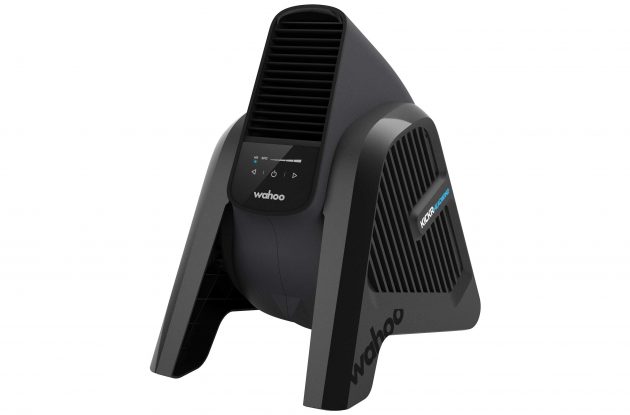
Wahoo Kickr Headwind Smart fan
Specifications
Reasons to buy
Reasons to avoid
Technically this is scope creep when it comes to cheap Zwift setups at home, as there is a sense of indulgence with a turbo specific fan.
That said, if it makes the difference of you actually wanting to use Zwift at all, then it's probably a good investment.
The cleaver thing with the Wahoo KICKR Headwind Bluetooth Fan is it's 'smart' functionality, with the ability to pair with a huge array of sensors and smart turbo trainers beyond the Wahoo range.
Capable of being paired with your heart rate monitor, speed sensor or turbo trainer, the fan provides optimised cooling based on the intensity of your workout. Essentially, the harder you push yourself, the more it will help cool you down. It also replicates head wind, blowing more when riding at pace and less when hill climbing, or there are four manual fan speeds to choose from, which can be done via the Wahoo App (iOS and Android compatible).
Wahoo say it's targeted airflow is designed to mirror the shape of a rider, making it a much more targeted air flow over a conventional fan.
We've not yet reviewed one, but anyone who has says they wish they'd made the plunge sooner and are more include to jump on their home bike because of it. If lacking motivation to overheat is something you suffer from, the Wahoo Kickr Headwind Fan could be what your missing.
Zwift compatible device
You can download and run the Zwift platform on most modern devices including smartphones, tablets and desktops. But there are some minimum system requirements you need to be aware of for your device to be able to run the virtual platform without hiccups.
For laptops and computers:
- Operating system: Microsoft® Windows 7 64bit or higher, or macOS® 10.10 or higher
- CPU: Intel® Core™ 2 Duo or better
- RAM: 4GB
- Graphics: 1GB dedicated GPU, or embedded Intel® HD 4000 or AMD R5
- Hard Drive: 4GB of free space
For smartphones, tablets and streaming devices:
- Android: Android 7.0 or higher
- iPhone: iPhone SE/iPhone5S or higher. iOS9.0 or higher
- iPad/iPod: iPad Air or higher, iPad® Pro, iPad mini® 2 or higher, or
- iPod 6. iOS® 9.0 or higher
- Apple TV: 4th generation or higher
A reliable internet connection will also ensure the other cycling avatars around you don't disappear from the virtual roads. If your paincave setup is located in the garage, a WiFi booster may be worth considering if you have a weak signal.
Why Zwift?
Zwift is a great online platform for training and racing from the comfort of your home on a turbo trainer.
It can take the boredom out of indoor riding and you can challenge yourself on Zwift without entering a race by building up to more demanding routes in Zwift's set of worlds and hunting out the in-game segments up climbs like the Alpe du Zwift.
If you're wondering where to start with riding at home, you might find it helpful to follow one of our cycling training plans. If you do decide to race, be warned it can be quite addictive. We learnt lessons on how to get the best out of racing the hard way, so learn by our errors on our 11 things you only know if you race on Zwift page.
There are many events you can join in with at all times of the day, including group workout sessions, races and Cycling Weekly's very own weekly time trial, which will make cycling indoors fun whatever your other outside commitments.
Other platforms to use when training indoors
It is worth noting these indoor setups that we guide you through will also have you covered for using other indoor cycling platforms, such as Wahoo Systm, Rouvy and Road Grand Tour (RGT)—so you are not restricted to just Zwift.
We have a helpful guide on indoor training apps for cycling compared: which is best for you? This will give you an example of each app and the differences between them to make sure fully committing to Zwift is the best option for you.
It's also worth mentioning here that, once you have the basics, you don't just have to stick to Zwift. You might find specific training sessions could really help both your indoor and out door cycling performance. If you're stuck for ideas, then you might fond our page dedicated to four of the best indoor cycling sessions for turbo training great inspiration.
What do I need to get set up on Zwift?
To get set up riding on Zwift you’ll need 1. A bike 2. Some form of stationary trainer 3. A power meter (either on the bike or integrated into the trainer) or a set of speed and cadence sensors for estimating your pedalling power 4. Some form of computer (this could be a laptop, tablet, Apple TV or even phone).
Within each of those general categories, there’s a huge range of products and devices you could potentially use. On the one hand, that’s great, as much of what you already own may already be up to the job. On the other hand, it can mean some tough decisions on what to invest in where a purchase does have to be made.
Our guide on the topic will help narrow down your search to find those that best suit your budget and requirements.
How much does it cost to set up on Zwift?
It depends on what hardware you already have. If you’ve got a bike, an indoor trainer, some way of reading power (or speed and cadence) and a computer or tablet – then the only cost would be the $14.99 / £12.00 per month.
Otherwise, a basic setup with a classic trainer and a speed and cadence sensor will cost about $150 / £100. Feature rich smart trainers can be found from around $500 / £400 on a discount.
If you don’t have a compatible device, an Apple TV is actually the cheapest way of running the application costing from $179.00 / £169.
While a new bike can be picked up for £500 / $600.
The latest race content, interviews, features, reviews and expert buying guides, direct to your inbox!

I’ve been hooked on bikes ever since the age of 12 and my first lap of the Hillingdon Cycle Circuit in the bright yellow kit of the Hillingdon Slipstreamers. For a time, my cycling life centred around racing road and track.
But that’s since broadened to include multiday two-wheeled, one-sleeping-bag adventures over whatever terrain I happen to meet - with a two-week bikepacking trip from Budapest into the mountains of Slovakia being just the latest.
I still enjoy lining up on a start line, though, racing the British Gravel Championships and finding myself on the podium at the enduro-style gravel event, Gritfest in 2022.
Height: 177cm
Weight: 60–63kg

